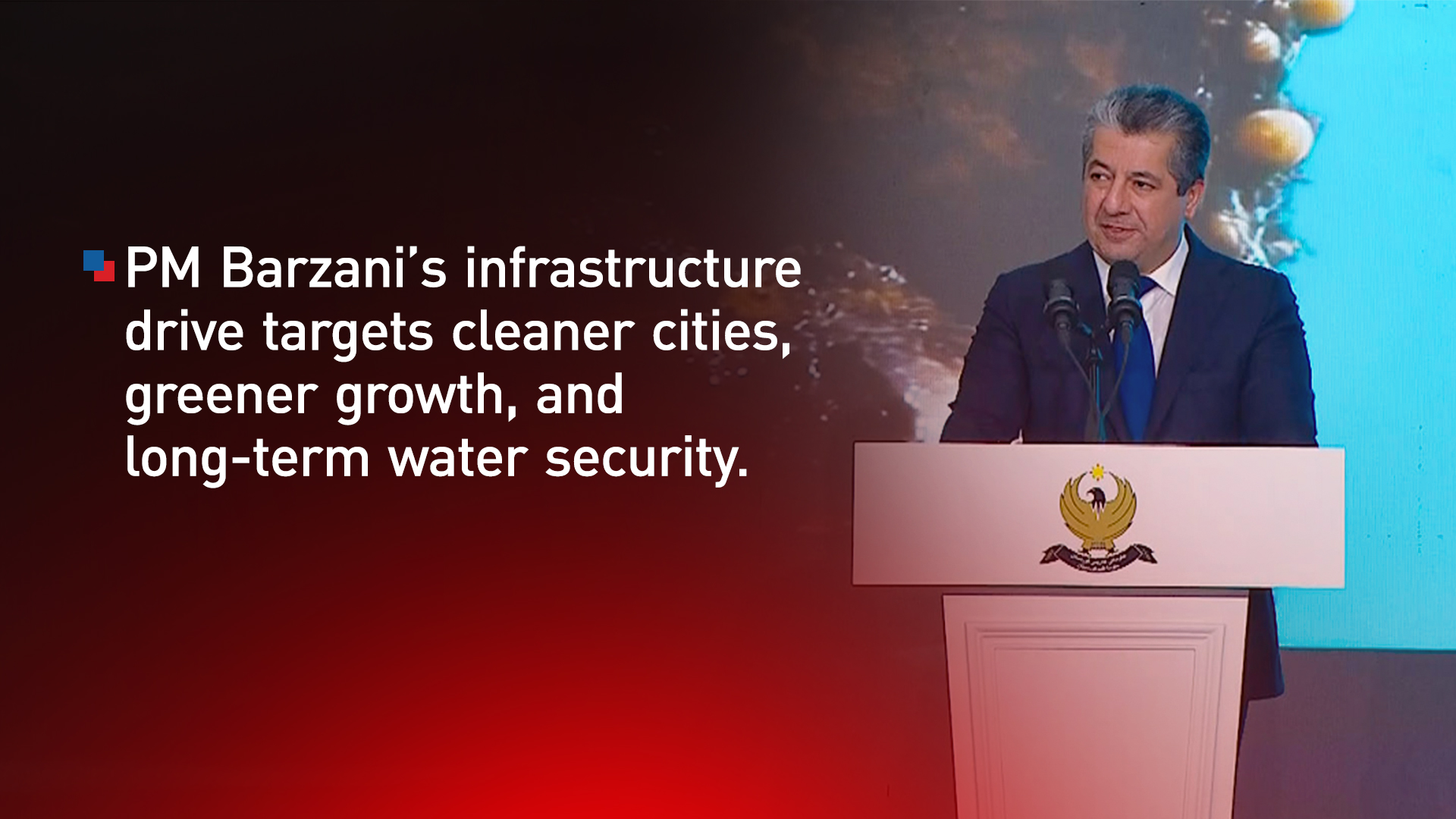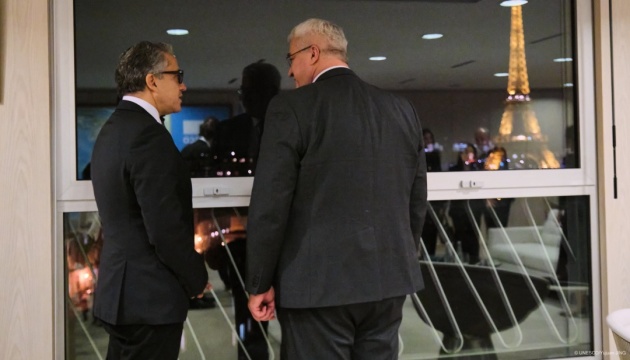PM Barzani Lays Foundation Stone for Phase Two of Erbil Wastewater Treatment Plant as KRG Accelerates Infrastructure Modernization – kurdistan24.net

Report on the Erbil Wastewater Treatment Plant Project and its Alignment with Sustainable Development Goals
1.0 Introduction
The Kurdistan Regional Government (KRG) has initiated the second phase of the Erbil Wastewater Treatment Plant, a flagship environmental infrastructure project valued at $579 million. This initiative is a central component of the KRG’s long-term strategy to modernize urban services, secure water resources, and protect the environment. The project is fundamentally aligned with several United Nations Sustainable Development Goals (SDGs), particularly those concerning clean water, sustainable cities, and public health.
2.0 Strategic Objectives and SDG Alignment
The project’s primary objectives are designed to create sustainable, long-term benefits for the citizens of Erbil and the wider Kurdistan Region. These goals directly support the 2030 Agenda for Sustainable Development.
- Modernize Essential Infrastructure: Develop a resilient sanitation system to serve a growing urban population, contributing to SDG 9 (Industry, Innovation, and Infrastructure).
- Safeguard Water Resources: Prevent the contamination of rivers and groundwater, a key target of SDG 6 (Clean Water and Sanitation) and SDG 15 (Life on Land).
- Enhance Public Health: Mitigate the spread of waterborne diseases by treating wastewater, directly supporting SDG 3 (Good Health and Well-being).
- Promote Sustainable Agriculture: Enable the reuse of treated water for irrigation, advancing SDG 12 (Responsible Consumption and Production).
- Support Urban Green Initiatives: Provide recycled water for urban greening projects such as the “Green Belt” and “Life Path,” which enhances urban resilience and contributes to SDG 11 (Sustainable Cities and Communities) and SDG 13 (Climate Action).
3.0 Detailed Contributions to Key Sustainable Development Goals
3.1 SDG 6: Clean Water and Sanitation
The project is a direct investment in achieving universal access to sanitation. Key contributions include:
- Implementing large-scale wastewater treatment to prevent pollution of natural water bodies.
- Protecting underground aquifers from contamination, ensuring the long-term viability of drinking water sources.
- Promoting water-use efficiency through the reuse of treated effluent for agriculture and urban landscaping.
3.2 SDG 11: Sustainable Cities and Communities
This facility is foundational to making Erbil a more inclusive, safe, resilient, and sustainable city. It achieves this by:
- Providing essential sanitation services required for a modern, livable city.
- Reducing the environmental footprint of the urban area.
- Supporting the expansion of green public spaces, which improves air quality and enhances the quality of life for residents.
3.3 SDG 3: Good Health and Well-being
By managing wastewater effectively, the plant will significantly reduce public health risks associated with contaminated water. This includes:
- Preventing the outbreak and spread of waterborne diseases.
- Creating a cleaner, healthier living environment for the city’s inhabitants.
4.0 Project Specifications and Implementation
4.1 Technical Details
- Budget: $579 million, fully funded by the KRG.
- Area: 205 dunams in western Erbil.
- Service Life: Designed to serve the city for up to 30 years.
- Capacity: 840,000 cubic meters of wastewater per day.
- Infrastructure: 21.9 km of underground wastewater pipelines.
- Technology: 5.3 km of pipelines will be installed using modern pipe jacking techniques to minimize disruption and avoid road excavation, reflecting a commitment to SDG 9.
4.2 Implementation Phases
The project is structured in two main phases to ensure alignment with international environmental standards and operational efficiency.
- Phase One: To be implemented by Japan’s JICA.
- Phase Two: To be implemented by Awzan, a Kurdistan-based company. The foundation stone for this phase was recently laid, with a projected two-year implementation plan.
5.0 Conclusion
The Erbil Wastewater Treatment Plant is a strategic investment that transcends basic infrastructure development. It represents a comprehensive approach to sustainable urban management, directly addressing critical challenges related to water scarcity, public health, and environmental protection. By embedding the principles of the Sustainable Development Goals into its design and objectives, the project lays a foundation for a cleaner, healthier, and more resilient future for the Kurdistan Region.
1. Which SDGs are addressed or connected to the issues highlighted in the article?
The following Sustainable Development Goals (SDGs) are relevant to the Erbil Wastewater Treatment Plant project:
- SDG 6: Clean Water and Sanitation: This is the most central SDG, as the project’s primary goal is to treat wastewater, protect natural water sources (rivers and groundwater), and enable the reuse of treated water. The article states the project is a “modern plant to treat wastewater and protect our natural water sources.”
- SDG 3: Good Health and Well-being: The project directly addresses public health by aiming to prevent “the spread of waterborne diseases” and reduce health risks associated with contaminated water.
- SDG 9: Industry, Innovation, and Infrastructure: The article describes the project as a “large-scale, sustainable infrastructure project” and part of a broader strategy to build “resilient, future-focused infrastructure,” including dams and roads, to support the region’s development.
- SDG 11: Sustainable Cities and Communities: The project is a key component of the KRG’s urban strategy. It supports initiatives like the “Green Belt” and “Life Path” projects, which are designed to “increase urban greenery, improve air quality, and enhance the city’s livability.”
- SDG 15: Life on Land: By preventing the contamination of freshwater ecosystems, the project contributes to the protection of biodiversity and the health of inland water bodies. The article explicitly mentions the goal is to “protect rivers” and “underground water.”
2. What specific targets under those SDGs can be identified based on the article’s content?
-
SDG 6: Clean Water and Sanitation
- Target 6.3: By 2030, improve water quality by reducing pollution… halving the proportion of untreated wastewater and substantially increasing recycling and safe reuse globally. The article’s core focus is on treating wastewater to prevent contamination and explicitly mentions that “treated water will be repurposed for agriculture and green spaces,” directly aligning with this target.
-
SDG 3: Good Health and Well-being
- Target 3.3: By 2030, end the epidemics of… water-borne diseases. The article states that the project “prevents… the spread of waterborne diseases.”
- Target 3.9: By 2030, substantially reduce the number of deaths and illnesses from… water… pollution and contamination. The project’s goal to prevent the “contamination of rivers, underground water” directly contributes to this target by reducing public exposure to polluted water sources.
-
SDG 9: Industry, Innovation, and Infrastructure
- Target 9.1: Develop quality, reliable, sustainable and resilient infrastructure… to support economic development and human well-being. The article describes the project as a “$579 million… large-scale, sustainable infrastructure project” that is part of the KRG’s “long-term strategy to modernize essential infrastructure” and “improve the lives of citizens.”
-
SDG 11: Sustainable Cities and Communities
- Target 11.6: By 2030, reduce the adverse per capita environmental impact of cities, including by paying special attention to… municipal and other waste management. The wastewater treatment plant is a major investment in municipal waste management. It also supports efforts to “improve air quality” and “enhance the city’s livability.”
-
SDG 15: Life on Land
- Target 15.1: By 2020, ensure the conservation, restoration and sustainable use of terrestrial and inland freshwater ecosystems and their services. The project’s aim to “protect our natural water sources” and prevent “contamination of rivers” directly supports the conservation of inland freshwater ecosystems.
3. Are there any indicators mentioned or implied in the article that can be used to measure progress towards the identified targets?
-
For SDG 6 (Target 6.3)
- Mentioned Indicator: The article specifies the plant’s treatment capacity as “840,000 cubic meters of wastewater per day.” This is a direct measure for Indicator 6.3.1: Proportion of wastewater safely treated.
- Implied Indicator: The statement that “treated water will be repurposed for agriculture and green spaces” implies a measure of the volume or percentage of treated wastewater that is safely reused.
-
For SDG 3 (Targets 3.3 & 3.9)
- Implied Indicator: The goal to prevent “the spread of waterborne diseases” implies that progress could be measured by the incidence rate of waterborne diseases in the areas served by the new plant.
-
For SDG 9 (Target 9.1)
- Mentioned Indicator: The article provides several quantitative measures of infrastructure investment and scale, such as the project budget (“$579 million”), the length of pipelines (“21.9 km of underground wastewater pipelines”), and the land area (“205 dunams”). These figures can serve as indicators of investment in sustainable infrastructure.
-
For SDG 11 (Target 11.6)
- Implied Indicator: The project’s support for the “Green Belt” and “Life Path” initiatives implies progress could be measured by the increase in the total area of public green space within Erbil. The goal to “improve air quality” also implies the use of air quality monitoring data (e.g., PM2.5 levels).
-
For SDG 15 (Target 15.1)
- Implied Indicator: The objective to “protect rivers, groundwater” from contamination implies that progress can be measured by testing the water quality of these bodies for pollutants, tracking improvements over time.
4. Create a table with three columns titled ‘SDGs, Targets and Indicators” to present the findings from analyzing the article.
| SDGs, Targets and Indicators | Targets | Indicators |
|---|---|---|
| SDG 6: Clean Water and Sanitation | 6.3: Improve water quality by reducing pollution and increasing safe reuse of wastewater. |
|
| SDG 3: Good Health and Well-being |
3.3: End epidemics of water-borne diseases. 3.9: Reduce illnesses from water pollution and contamination. |
|
| SDG 9: Industry, Innovation, and Infrastructure | 9.1: Develop quality, reliable, sustainable and resilient infrastructure. |
|
| SDG 11: Sustainable Cities and Communities | 11.6: Reduce the adverse per capita environmental impact of cities (waste management). |
|
| SDG 15: Life on Land | 15.1: Ensure the conservation and sustainable use of inland freshwater ecosystems. |
|
Source: kurdistan24.net
What is Your Reaction?
 Like
0
Like
0
 Dislike
0
Dislike
0
 Love
0
Love
0
 Funny
0
Funny
0
 Angry
0
Angry
0
 Sad
0
Sad
0
 Wow
0
Wow
0
















































:focal(1500,1000)/https://media.globalcitizen.org/a6/9a/a69a4720-d8a1-4715-b596-18738d03c05c/rotary_polio_hero_image.jpg?#)







/countries/sri-lanka/photo-credit---dmc-sri-lanka.tmb-1200v.jpg?sfvrsn=dc298bcc_1#)

















